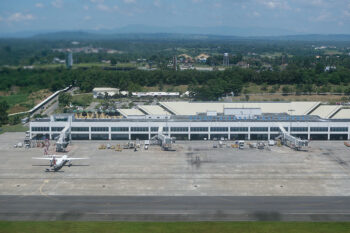I. Leadership Strength Indicator
GENERAL SANTOS CITY, May 28, 2016 – President Benigno Simeon C. Aquino III assumed command of Draft Bangsamoro Basic Law (H|B 4994) to sail it through the Ad Hoc Committee on Bangsamoro Basic Law of the House of Representatives. Will this ensure the passage of the House version of the BBL by June 11 for the establishment of a meaningful Bangsamoro autonomy? The question raises more issues than assurance.
Let’s consider the prime factors — all the “Who”, the “This and That”, the “Why” and the “Wherefor” – within our grasp.
Who Decides
The BBL goes through two congressional mills – the House of Representatives and the Senate. In each, the milling is in two levels – the committee and the plenary. The Senate and the House versions are later consolidated or reconciled in the Bi-Cameral Conference Committee then the two Houses separately approve the consolidated version to become the BBL Act.
The Senate has 24 members. SB 2408 (Draft BBL) is being heard by the Committee on Local Government, the principal committee, chaired by Sen. Ferdinand R. Marcos Jr. It has been heard by the Committee on Peace, Unification and Reconciliation, chaired by Sen. Teofisto Guingona III; and the Committee on Constitutional Amendments and Revision of Codes, by Sen. Miriam Defensor-Santiago. After the hearings, SB 2408 will be as good as heard in the plenary due to the inter-lapping committee membership.
The Marcos committee still has one more hearing on June 1, after which it will end its deliberations and come up with its report. Even if it finishes its report by June 3, by legislative rule, the earliest that can be submitted to the plenary after three session days is on June 8. The Congress adjourns sine die on June 11. The Third Regular Session of the 16th Congress starts around July 27.
The senators are unfazed by the June 11 time-line to pass the BBL.
The House has 291 members – 235 district and 56 party-list representatives. HB 4994 has been heard by a special committee, the AHCBBL. It has 98 members – 75 regular members, 65 district and ten party-list representatives; and, 23 ex-officio members, the House Speaker, majority and minority leaders and all their deputies.
The AHCBBL approved HB 4994 last May 20; it will be reported for second reading on June 1; plenary debates will immediately follow through the next two days and resume on June 8 to 10. MindaNews (May 24, 2015: Plenary debate on Bangsamoro law begins June 1) reported that AHCBBL Chair Rufus Rodroguez is “confident the law will be passed before they adjourn sine die on June 11”.
Will Rodriguez’s confidence come to reality? By media reports, HB 4994 has become more contentious than it had been before President Aquino III assumed command. That will put to an acid test Aquino III’s political sway over the House that, as a consequence, will clue the impact of his sway over the Senate.
The House is trying to keep alive its commitment to the June 11 time-line to pass the BBL despite the signs of hopelessness.
Political Alignment
Whether Bangsamoro (re-named “Bangsamoro Autonomous Region” in HB 4994) will be aborted or born – if born, whether healthy or handicapped – greatly depends on the leadership of President Aquino III. If he is really a strong leader, he must not allow the Congress to water down, dilute or re-make the plan to solve the Moro Problem – a plan that took 17 years to hammer out in contentious negotiations. “Democratic process” and the “doctrine of separation of powers” are not an excuse to not protect the “unborn”.
How are the senators and House representatives politically aligned in relation to the President? Will the President be able to make them toe the “Malacanang version” or revised Draft BBL line? That has been tested in the AHCBBL vote. The final test will be in the plenary.
Under the Philippine multi-party system, President Aquino III’s Liberal Party (LP) has to coalesce with the Nacionalista Party (NP) and the Nationalist People’s Coalition (NPC) to have a majority in the Congress. How does the LP-led coalition stand?
In the Senate, it has eleven members – five NPs, four LPs and two NPCs. Even if the coalition votes solid, it has to tap votes from three Independents and ten of the other parties to pass major administration measures. The opposition bloc is led by the five-member United Nationalist Alliance. However, in the Senate where egoism reigns supreme, the coalition members cannot be relied on.
In the House, the LP-led coalition with 178 members – 73.19 percent of the 235 district representatives – has clear majority. The 56 party-list representatives cast their votes according to their groups’ special interests.
Can the President whip up the support of the LP-led coalitions in the Senate and the House to pass the BBL in time for the establishment of the Bangsamoro before he steps down on June 30, 2016?
(To Be Continued)
(Comment” is Mr. Patricio P. Diaz’ column for MindaViews, the opinion section of MindaNews. The Titus Brandsma Media Awards honored Mr. Diaz with a “Lifetime Achievement Award” for his “commitment to education and public information to Mindanawons as Journalist, Educator and Peace Advocate.” You can reach him at patponcediaz@yahoo.com)







